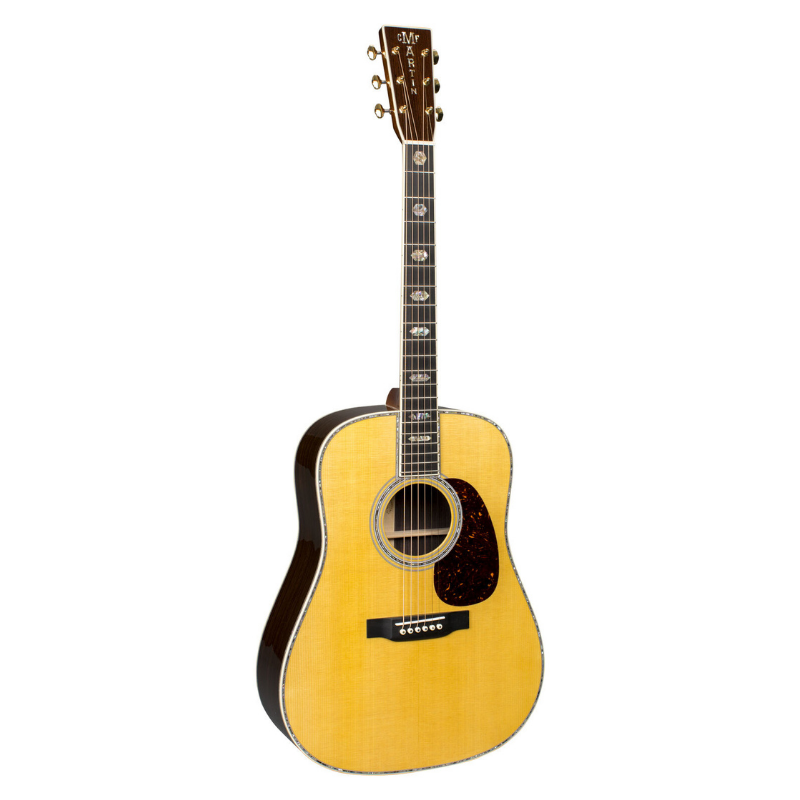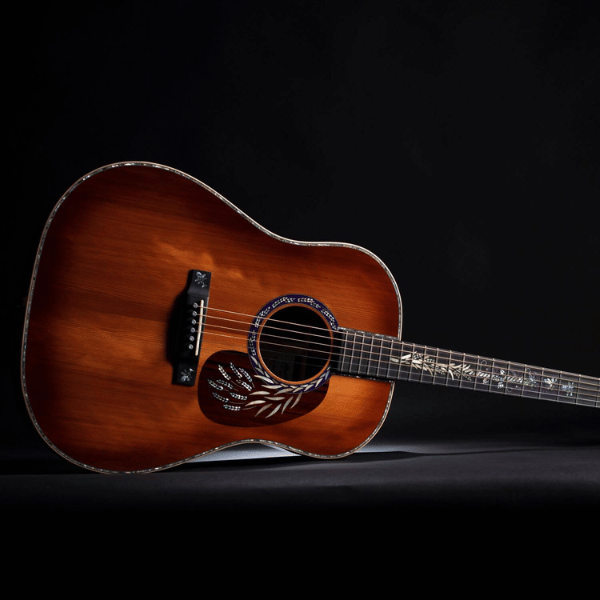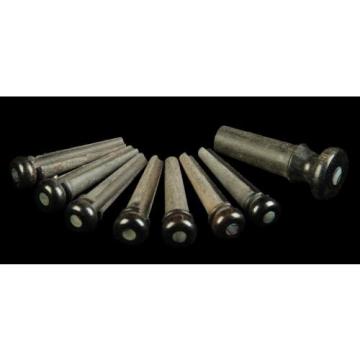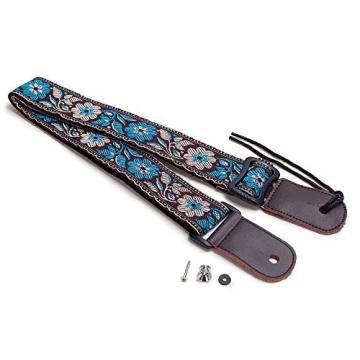Home> Company News> Martin OM-28: The Evolution of a Popular Acoustic Guitar
- AddressShan Dong Province,China
- Factory AddressShan Dong Province,China
- Phone(Working Time)86-13305315989
- Phone(Nonworking Time)86-13305315989
Martin OM-28: The Evolution of a Popular Acoustic Guitar
2023-05-06 16:17:01The Martin OM 28 is a classic acoustic guitar known for its rich sound, comfortable playability, and unique history. It's a favorite among musicians of all genres and skill levels, from beginners to seasoned professionals. In this article, we'll take a closer look at the history and evolution of the OM-28 model, from its origins as an orchestra-style guitar to the modern classic we know today.
The OM-28 was first introduced by Martin in the 1920s as part of their "Orchestra Model" line of guitars. These instruments were designed to provide a louder, more balanced sound that could compete with the large ensembles and orchestras of the time. The OM-28 featured a smaller, more comfortable body size than the traditional dreadnought, which made it easier to play for extended periods of time. The OM-28's body size and shape, along with its scalloped bracing and other design features, allowed it to produce a warm, well-balanced sound that was perfect for both fingerstyle and flatpicking.
Over the years, the OM-28 underwent several changes and developments, both in terms of design and materials. In the 1930s, the OM-28 was redesigned with a larger body size and more advanced bracing, which resulted in a louder and more complex sound. In the 1960s and 70s, Martin experimented with different materials for the OM-28, including Brazilian rosewood, which gave the guitar a brighter, more articulate sound.
Today, the OM-28 is a modern classic that combines the best of Martin's vintage and modern design elements. It features a comfortable, compact body size, solid Sitka spruce top, and solid East Indian rosewood back and sides. The guitar's bracing has been refined over the years to provide maximum volume, sustain, and tonal balance. The OM-28 also features a modified low oval neck shape, ebony fingerboard, and bridge.
While the OM-28 has gone through several changes over the years, it has remained a popular and sought-after guitar among musicians. Its unique history and versatile sound make it a favorite among players of all styles and genres. Whether you're a beginner or a seasoned professional, the Martin OM-28 is a classic guitar that's worth exploring.

Martin OM-28: A Versatile Guitar for Various Playing Styles
The Martin OM 28 is a versatile guitar that can accommodate a wide range of playing styles. Its balance of warmth, projection, and clarity make it suitable for fingerstyle, flatpicking, and strumming.
The OM-28's design contributes to its versatility. Its smaller, orchestra-style body is comfortable to hold and play for extended periods, making it an excellent choice for gigs, rehearsals, and recording sessions. The 14-fret neck joint also provides easy access to the upper frets, allowing for more advanced playing techniques.
Compared to other Martin models, the OM-28 has a distinctive sound that sets it apart. Its scalloped X-bracing, which is lighter and more flexible than other types of bracing, allows the top to vibrate more freely, producing a rich, complex tone with plenty of sustain. The OM-28's sound is balanced across the frequency spectrum, with clear highs, rich mids, and deep lows.
In terms of versatility, the OM-28 is often compared to the Martin D-28. While the D-28 has a bigger and louder sound, the OM-28 is more comfortable to play for extended periods, making it a great choice for fingerstyle players and singer-songwriters. The OM-28 also has a more balanced sound, making it more suitable for recording and mixing.
Other acoustic guitar brands offer similar models to the OM-28, such as the Taylor 814ce and the Gibson J-45. While these guitars have their own unique sound and design, the OM-28 stands out for its versatility and iconic status.
The OM-28's versatility is evident in the wide range of genres and artists that have used it. From folk to blues to rock, the OM-28 has been played by some of the most legendary musicians in history, such as John Mayer, David Crosby, and Johnny Cash. Its warm and balanced sound can cut through any mix, making it suitable for solo performances, duets, and full band arrangements.
Overall, the Martin OM-28 is a versatile guitar that can meet the needs of a wide range of players and styles. Its balanced sound, comfortable design, and iconic status make it a popular choice among musicians and collectors alike.
Customizing Your Martin OM-28: Options and Recommendations
The Martin OM-28 offers a range of customization options that allow players to create a guitar that reflects their personal style and preferences. From choosing different wood options to adding custom inlays, there are many ways to make your OM-28 unique.
One of the most popular ways to customize an OM-28 is by selecting a different wood for the back and sides. The standard OM-28 comes with East Indian rosewood back and sides, but Martin offers several other options, including Madagascar rosewood, Brazilian rosewood, and cocobolo. Each wood has its own unique tonal characteristics, so it's worth trying out different options to see which one works best for you.
Another way to customize your OM-28 is by adding custom inlays. Martin offers a range of options, from simple dot inlays to elaborate designs featuring intricate patterns and shapes. Inlays can be added to the fingerboard, headstock, and even the top of the guitar.
Hardware options are another area where players can customize their OM-28. The guitar comes standard with a set of open-gear tuners, but players can opt for different tuners or even add an onboard pickup system for amplification.
While customizing your OM-28 can be a fun and rewarding experience, it's important to keep in mind that any modifications you make to the guitar can affect its sound and playability. If you're not sure about which options to choose, it's always a good idea to consult with an experienced luthier or guitar technician who can guide you through the process.
When choosing customization options, it's also important to consider the overall aesthetic of the guitar. While some players prefer a more understated look, others may opt for a more elaborate design featuring custom inlays and other decorative elements. It's important to choose features that complement your playing style and personal preferences while also maintaining the integrity and value of the guitar.
In conclusion, customizing your Martin OM 28 is a great way to create a unique and personalized instrument that reflects your individual style and preferences. With a range of options available, players can create a guitar that not only looks great but also sounds and plays beautifully. However, it's important to consider the impact that any modifications may have on the guitar's sound and playability and to seek professional guidance if needed.
Caring for Your Martin OM-28: Maintenance and Preservation
Taking good care of your Martin OM-28 is crucial to keeping it in top playing condition and preserving its value over time. Proper maintenance can help prevent costly repairs and prolong the life of your guitar. In this section, we'll go over some best practices for maintaining and preserving your OM-28.
- Cleaning and Polishing the Guitar Regular cleaning and polishing can help keep your OM-28 looking and sounding great. Use a soft, lint-free cloth to wipe down the guitar after each use. Avoid using water or cleaning products that contain harsh chemicals, as they can damage the finish or other components of the guitar.
If your guitar needs more than just a wipe-down, you can use a guitar polish specifically designed for acoustic guitars. Apply the polish to a soft cloth and gently rub it into the guitar's finish, using circular motions. Be sure to avoid getting polish on the guitar's hardware, such as the tuning machines or bridge.
- Changing Strings and Adjusting the Neck Regularly changing the strings on your OM-28 is important for maintaining its tone and playability. How often you need to change the strings depends on how frequently you play, but a good rule of thumb is to change them every three to six months.
When changing the strings, it's a good idea to inspect the neck and make any necessary adjustments. If the neck is too straight or too bowed, it can affect the guitar's playability and intonation. Use a truss rod wrench to adjust the neck if necessary, following the manufacturer's instructions carefully.
-
Storing the Guitar Safely Proper storage is important for keeping your OM-28 safe and protected. When not in use, store the guitar in a dry, cool place, away from direct sunlight and sources of heat or moisture. You can use a guitar case or a guitar stand to store the guitar, but be sure to choose a stand that is stable and won't tip over easily.
-
Recommendations for Professional Maintenance and Repair While regular maintenance can go a long way in keeping your OM-28 in top condition, there may come a time when you need to bring your guitar to a professional for repairs or maintenance. If you're not comfortable making adjustments or repairs yourself, it's best to leave it to a professional.
Some common repairs that may be needed include fixing cracks or other damage to the body or neck, replacing the bridge or other hardware, or re-fretting the guitar. If you're not sure what kind of repair or maintenance your guitar needs, bring it to a reputable guitar shop or luthier for an assessment.
Overall, taking good care of your Martin OM-28 is essential for ensuring that it continues to sound and play great for years to come. By following these best practices for maintenance and preservation, you can keep your guitar in top condition and enjoy playing it for many years.
Martin OM-28 vs. Similar Acoustic Guitars: Comparing Sound and Features
When it comes to acoustic guitars, the Martin OM 28 is a popular choice for many musicians. But how does it compare to other acoustic guitars on the market? In this section, we'll explore the differences between the Martin OM-28 and similar models from Martin and other brands.
First, let's compare the OM 28 to other Martin models. The OM-28 is part of Martin's "Orchestra Model" series, which is known for its smaller body size and balanced sound. Compared to the larger dreadnought models like the D-28, the OM-28 has a more focused sound that's ideal for fingerstyle playing and lighter strumming. The OM-28 also has a slimmer neck profile than many other Martin models, making it a comfortable choice for players with smaller hands.
If you're considering other brands, the Taylor 814ce and the Gibson J-45 are two models that are often compared to the Martin OM-28. The Taylor 814ce is known for its clear, balanced sound and comfortable playability. It has a grand auditorium body shape that's similar in size to the OM-28, and it features Taylor's patented Expression System 2 electronics. The Gibson J-45, on the other hand, has a larger dreadnought body shape and a warm, rich sound that's favored by many blues and folk guitarists. It features a solid Sitka spruce top and mahogany back and sides, and it's often used for both strumming and fingerpicking.
In terms of sound, the Martin OM-28 has a balanced, clear sound that's well-suited for a variety of playing styles. Its smaller body size and scalloped bracing give it a more focused sound than some larger acoustic guitars, while still providing plenty of volume and projection. Compared to the Taylor 814ce, the OM-28 has a slightly warmer sound with a more midrange-focused tone. The Gibson J-45, on the other hand, has a much warmer and bass-heavy sound that's better suited for strumming and rhythm playing.
When it comes to features and specifications, the Martin OM-28 has a solid Sitka spruce top, solid East Indian rosewood back and sides, and a modified low oval neck shape. It features Martin's standard X-bracing, which provides plenty of volume and projection without sacrificing clarity or balance. The Taylor 814ce features a Sitka spruce top, Indian rosewood back and sides, and Taylor's patented "V-Class" bracing system, which enhances sustain and intonation. The Gibson J-45 has a solid Sitka spruce top, mahogany back and sides, and a slim-taper neck profile. It features Gibson's traditional scalloped X-bracing, which provides a warm, resonant sound.
Ultimately, the choice between the Martin OM-28 and other acoustic guitars will depend on your personal preferences and playing style. If you're looking for a smaller-bodied guitar with a balanced, clear sound, the OM-28 is an excellent choice. If you prefer a warmer, more bass-heavy sound for strumming and rhythm playing, the Gibson J-45 might be a better fit. And if you're looking for a clear, balanced sound with advanced electronics, the Taylor 814ce could be the right choice.

Buying a Martin OM-28: Tips and Considerations
If you've decided that a Martin OM-28 is the right guitar for you, there are a few important factors to consider before making a purchase. Here are some tips and recommendations to help you find the right OM-28 for your needs and preferences.
-
Budget: The first thing to consider when buying a Martin OM-28 is your budget. The OM-28 is not a cheap guitar, and prices can vary depending on the year, condition, and location of the guitar. Be prepared to spend at least a few thousand dollars for a new OM-28, and even more for a vintage model.
-
Playing style: The Martin OM-28 is a versatile guitar that can accommodate a range of playing styles, from fingerstyle to flatpicking to strumming. However, some players may prefer other guitars that are better suited for their specific style. Consider your playing style and try out different guitars to find the one that feels the most comfortable and natural to play.
-
Wood choice: The Martin OM 28 is available with different wood choices for the top, back, and sides. These choices can affect the guitar's sound and tone, so it's important to choose the right wood for your preferences. Some popular options include Sitka spruce for the top and East Indian rosewood for the back and sides, but you can also choose from other woods such as mahogany, koa, and Brazilian rosewood.
-
New vs. used: When buying a Martin OM-28, you can choose between buying a new guitar or a used one. New guitars come with a warranty and are typically in pristine condition, but they can be more expensive. Used guitars are often more affordable, but you should be careful to inspect the guitar for any damage or wear and tear before making a purchase.
-
Where to buy: You can buy a Martin OM-28 from a variety of sources, including authorized dealers, music stores, and private sellers. Authorized dealers and music stores are typically the safest options, as they offer warranties and have a reputation to uphold. Private sellers can be riskier, but you may be able to find a good deal if you're careful and do your research.
-
Avoiding scams: When buying a Martin OM-28, it's important to be aware of potential scams and fraud. Be wary of deals that seem too good to be true, and never send money or personal information to a seller before inspecting the guitar in person. If possible, bring a knowledgeable friend or guitar technician with you to help you inspect the guitar and verify its authenticity.
By considering these factors and doing your research, you can find the right Martin OM-28 for your needs and preferences. Whether you're a beginner or a seasoned professional, the OM-28 is a timeless and versatile guitar that can bring years of joy and inspiration to your playing.
 Martin martin guitar strings Acoustic martin d45 Guitar martin guitars Bridge/End martin acoustic guitars Pin martin strings acoustic Set Ebony with Paua Pearl Inlays
Martin martin guitar strings Acoustic martin d45 Guitar martin guitars Bridge/End martin acoustic guitars Pin martin strings acoustic Set Ebony with Paua Pearl Inlays Kind martin guitar accessories Letters guitar martin martin acoustic guitars martin acoustic guitar martin
Kind martin guitar accessories Letters guitar martin martin acoustic guitars martin acoustic guitar martin CLOUDMUSIC martin guitar case Colorful acoustic guitar strings martin Hawaiian martin strings acoustic Style martin acoustic guitar strings Cotton martin guitar accessories Ukulele Strap Blue White Flower (Brown)
CLOUDMUSIC martin guitar case Colorful acoustic guitar strings martin Hawaiian martin strings acoustic Style martin acoustic guitar strings Cotton martin guitar accessories Ukulele Strap Blue White Flower (Brown) R martin guitars & guitar martin R martin guitar strings acoustic medium audio martin acoustic guitar strings CD martin guitar strings
R martin guitars & guitar martin R martin guitar strings acoustic medium audio martin acoustic guitar strings CD martin guitar strings pf1016-b martin guitar case Martin's martin strings acoustic Guitar martin d45 Lounge martin guitar accessories Beer acoustic guitar martin Bar Pub Room Neon Light Sign
pf1016-b martin guitar case Martin's martin strings acoustic Guitar martin d45 Lounge martin guitar accessories Beer acoustic guitar martin Bar Pub Room Neon Light Sign
